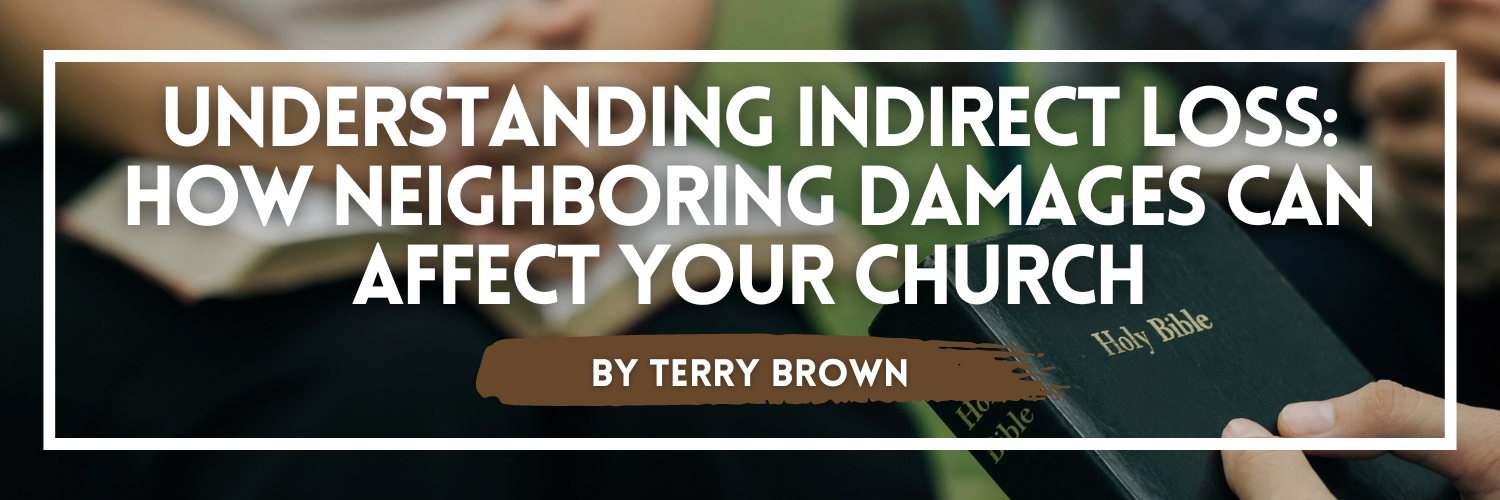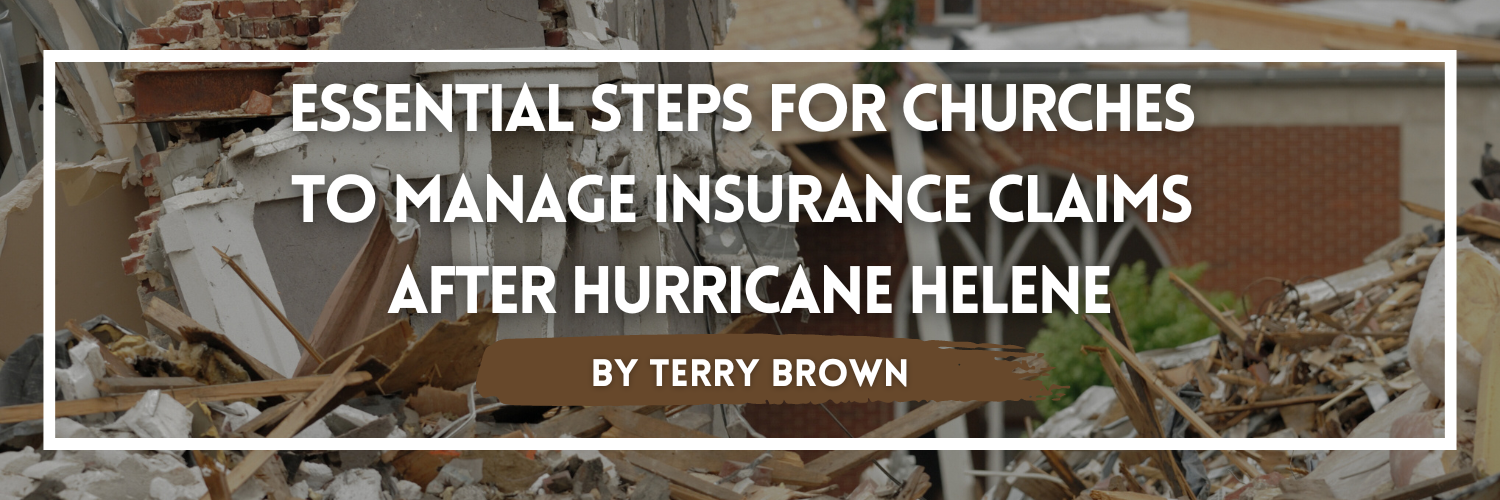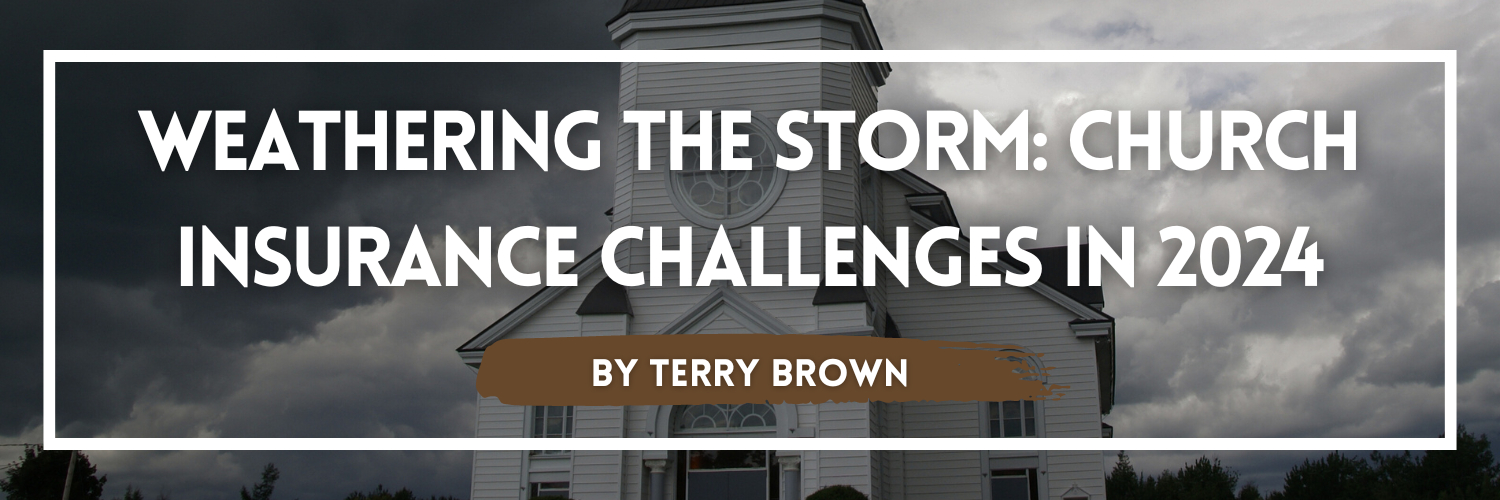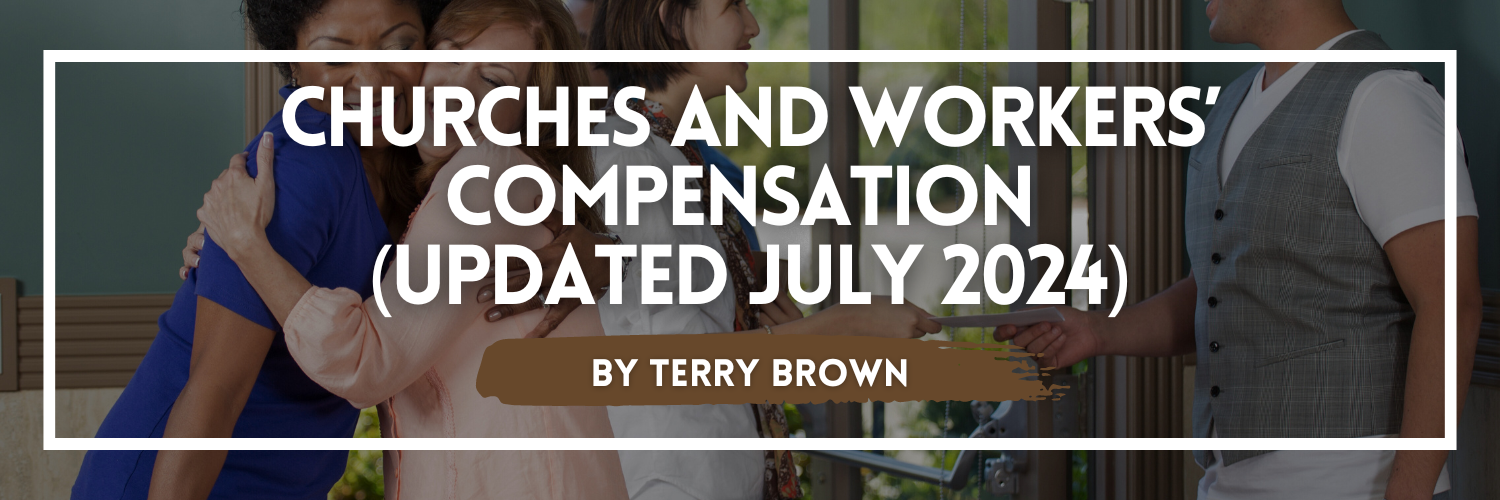Imagine this: Your church is all set for Sunday service, but a fire in the neighboring unit of your strip mall renders your space unusable. Now, what do you do? Indirect losses can significantly impact tenant churches, affecting their ability to hold services and gather their community. This article will explain indirect loss, provide real-life examples, and offer insights on protecting your church from these unexpected disruptions.
KEY POINTS
- Indirect loss can significantly impact tenant churches.
- Damage to neighboring units can render your church unusable.
- Pastors must navigate disruptions to maintain services.
- Continuity of services is crucial for spiritual and communal well-being.
- Clear communication with the congregation is essential during disruptions.
- Insurance solutions can help protect against indirect losses.
- Review lease agreements for insurance and property damage clauses.
- Create a comprehensive emergency preparedness plan for your church.
What is Indirect Loss?
Indirect loss refers to damage that doesn’t directly impact your property but affects its usability and functionality. For example, imagine a neighboring unit in a strip mall experiences a fire. While your church may not be directly damaged by the fire, smoke damage or safety concerns can render your space unusable. Understanding indirect loss is crucial for tenant churches because it highlights potential risks that can disrupt their activities and community gatherings.
Real-Life Scenarios of Indirect Loss
Neighboring Unit Fire
A fire in a neighboring unit can create significant problems for your church, even if the flames never reach your space. Smoke can permeate walls, making it unhealthy to hold services. Safety concerns or fire department regulations may prevent access to the building until thorough inspections and repairs are completed.
Water Damage
A burst pipe in a neighboring unit can lead to water seeping into your church’s rented space. This can cause extensive damage to your equipment, furniture, and floors, making it impossible to conduct services until repairs are made and the space is dried out and restored.
Structural Issues
Structural problems in an adjacent unit, such as a collapsing roof or unstable foundation, can force evacuations or necessitate repair work. This disruption can be prolonged, affecting your church’s ability to gather and operate normally.
The Pastor’s Role and the Church’s Needs
Pastors already face numerous challenges in managing their churches and supporting their congregations. Indirect loss adds to these challenges, making it even more critical for pastors to understand and manage these risks. Ensuring the church’s operations can continue smoothly, even in the face of indirect loss, is essential for maintaining community and faith.
Navigating Disruptions
Indirect losses, such as those caused by neighboring unit incidents, can lead to sudden and unexpected disruptions. Pastors need to be prepared to navigate these disruptions effectively to ensure that church activities can continue with minimal interruption. This involves having a clear understanding of potential risks and a solid plan in place to address them swiftly.
Ensuring Continuity of Services
The ability to continue holding services and gatherings is crucial for maintaining the spiritual and communal well-being of the congregation. Pastors must ensure that there are contingency plans, such as alternative locations for services or online worship options, to keep the community connected and engaged, even when the church’s physical space is compromised.
Communication with the Congregation
Clear and timely communication with the congregation is essential during times of disruption. Pastors must keep their members informed about any changes to service locations, schedules, or other important updates. This helps maintain trust and ensures that the congregation remains unified and well-informed.
Financial Management
Indirect losses can have significant financial implications. Pastors need to be aware of the potential costs associated with such disruptions, including repairs, temporary relocation, and lost revenue from canceled services or events. Effective financial management and appropriate insurance coverage are crucial to mitigate these impacts and ensure the church’s financial stability.
Emotional and Spiritual Support
During times of indirect loss, congregants may experience stress and uncertainty. Pastors play a vital role in providing emotional and spiritual support, helping members navigate their concerns and fears. By addressing these needs, pastors help maintain the congregation’s faith and resilience in the face of adversity.
Building a Resilient Community
Understanding and managing the risks associated with indirect loss contributes to building a more resilient church community. Pastors who proactively address these challenges demonstrate strong leadership and foresight, fostering a sense of security and preparedness within the congregation.
How to Protect Your Church from Indirect Loss
Insurance Solutions
There are specific types of insurance that can help protect your church from indirect losses:
Property Damage Insurance
This coverage helps protect against losses caused by incidents in neighboring units. It ensures that your church can recover from damages that aren’t directly inflicted on your property but still affect its usability.
Business Interruption Insurance
This insurance ensures financial stability when your services are disrupted. It can cover lost income and additional expenses incurred during the period your church is unable to operate normally due to indirect loss.
Lease Agreement Review
Understanding your lease clauses related to insurance and property damage is crucial. Here are key points to consider during your review:
- Insurance Requirements: Ensure the lease specifies the types of insurance you must carry and that it includes coverage for indirect losses.
- Responsibility for Damages: Clarify which party is responsible for damages caused by neighboring units and under what conditions.
- Restoration Obligations: Understand the landlord’s obligations to restore the property after damage occurs and the expected timeline.
- Access to Premises: Check for clauses that detail your rights to access the premises during repairs or renovations in neighboring units.
- Termination Conditions: Be aware of any conditions under which the lease can be terminated due to indirect losses and how this affects your responsibilities and financial obligations.
Reviewing these points with a legal professional can help ensure that your church is adequately protected and that you fully understand your rights and responsibilities.
Emergency Preparedness
Creating a comprehensive contingency plan for your church is essential to minimize disruption during indirect loss events. Here’s a detailed checklist to help you prepare:
- Emergency Contact Information:
- Maintain an updated list of contact details for all key personnel, including church leaders, staff, and emergency service providers.
- Include contact information for your insurance provider and landlord.
- Alternative Locations for Services:
- Identify and arrange alternative venues for holding services in case your primary location becomes unusable.
- Consider partnerships with nearby churches or community centers that can accommodate your congregation temporarily.
- Communication Strategy:
- Develop a plan for informing your congregation about disruptions and alternative arrangements. This can include email notifications, social media updates, and phone trees.
- Ensure all communication methods are regularly updated and accessible to all members.
- Emergency Supplies and Equipment:
- Stock essential supplies such as first aid kits, flashlights, and emergency contact lists in easily accessible locations.
- Ensure that important documents and records are backed up and stored securely, both digitally and physically.
- Training and Drills:
- Conduct regular training sessions for staff and volunteers on emergency procedures and contingency plans.
- Organize drills to practice evacuation routes and emergency protocols.
- Financial Preparedness:
- Set aside an emergency fund to cover unexpected expenses related to indirect losses.
- Review your insurance coverage periodically to ensure it remains adequate for your needs.
By thoroughly preparing for indirect losses through a combination of appropriate insurance, careful lease agreement reviews, and comprehensive emergency planning, your church can maintain its operations and support its congregation through challenging times.
For personalized insurance advice and a quote, contact Terry Brown, Church Insurance Specialist, at (706) 851-7110. You can also click the link below to start your quote online:
[Click here to get a church insurance quote from Terry Brown]
Frequently Asked Questions
What is indirect loss?
Indirect loss refers to damage that doesn’t directly impact your property but affects its usability and functionality. For example, damage to a neighboring unit that results in smoke infiltration or structural issues affecting your church space.
How can a fire in a neighboring unit affect my church?
Even if the fire doesn’t directly damage your church, smoke can permeate walls, making it unhealthy to hold services. Safety concerns or fire department regulations may prevent access to the building until inspections and repairs are completed.
What should I do if a neighboring unit experiences water damage?
If a burst pipe in a neighboring unit causes water to seep into your church’s space, you need to address the water damage immediately. This includes drying out and repairing the affected areas to resume services as soon as possible.
Why is it important for pastors to understand indirect loss?
Pastors need to be prepared for sudden and unexpected disruptions that can impact their ability to hold services and support their congregation. Understanding indirect loss helps in creating contingency plans and maintaining church operations smoothly.
What types of insurance can protect my church from indirect loss?
- Property Damage Insurance: Covers losses caused by incidents in neighboring units, ensuring your church can recover from damages that affect its usability.
- Business Interruption Insurance: Provides financial stability when services are disrupted, covering lost income and additional expenses during the period your church is unable to operate normally.
What should I look for in my lease agreement regarding indirect loss? Key points to consider include:
- Insurance Requirements: Ensure the lease specifies the types of insurance you must carry.
- Responsibility for Damages: Clarify which party is responsible for damages caused by neighboring units.
- Restoration Obligations: Understand the landlord’s obligations to restore the property after damage and the expected timeline.
- Access to Premises: Check your rights to access the premises during repairs.
- Termination Conditions: Be aware of conditions under which the lease can be terminated due to indirect losses.
How can I prepare my church for potential indirect losses?
- Maintain updated emergency contact information.
- Identify alternative locations for services.
- Develop a communication strategy for informing your congregation about disruptions.
- Stock emergency supplies and ensure important documents are securely backed up.
- Conduct regular training and drills for emergency procedures.
- Set aside an emergency fund and review insurance coverage periodically.
How do I ensure continuity of services during disruptions?
Have contingency plans in place, such as alternative locations for services or online worship options. Clear and timely communication with your congregation is essential to keep them informed and engaged.
What financial implications can indirect losses have on my church?
Indirect losses can lead to repair costs, temporary relocation expenses, and lost revenue from canceled services or events. Effective financial management and appropriate insurance coverage are crucial to mitigate these impacts.
How can I provide emotional and spiritual support to my congregation during indirect losses?
By addressing their concerns and fears, offering counseling, and ensuring that the church community remains connected and supported, you help maintain their faith and resilience during challenging times.




